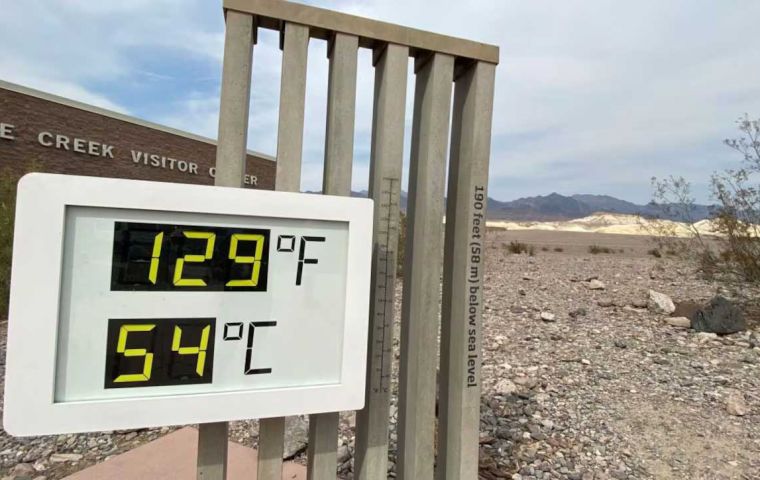MercoPress. South Atlantic News Agency
June 2024 the hottest on record, Copernicus study finds
 Each fraction of a degree does matter, scientists like Saulo warn
Each fraction of a degree does matter, scientists like Saulo warn Last month was the hottest June on record in the northern hemisphere, according to a study from the European Union’s Copernicus Climate Change Service released Monday. It was also the thirteenth month in a row to set a temperature record.
“These latest figures from the Copernicus Climate Change Service, unfortunately, highlight that we will be exceeding the 1.5 degrees Celsius level on a temporary basis with increasing frequency,” World Meteorological Organization (WMO) Secretary-General Celeste Saulo said regarding the threshold marking the temperature rise above pre-industrial levels beginning in 1850.
“However, it is important to stress that temporary breaches do not mean that the 1.5 degrees Celsius goal is permanently lost because this refers to long-term warming over at least two decades,” the Argentine scientist heading the United Nations (UN) weather agency also pointed out.
Efforts to limit the long-term global average surface temperature to 1.5 degrees Celsius by the end of this century were officially endorsed under the Paris Agreement in 2016.
The scientific community has warned that warming beyond that point may lead to increasingly severe climate change impacts in addition to other weather events. Therefore, each fraction of a degree does matter.
Specifically, every 0.1 degree Celsius increase causes “clearly discernible increases in the intensity and frequency of temperature and precipitation extremes, as well as agricultural and ecological droughts in some regions,” according to the WMO, which has also warned that even at today's levels of warming, the world faces devastating climate impacts. Extreme heatwaves, rainfall events, droughts, reductions in glaciers, and accelerating sea level rise are already ravaging the planet.
Extreme heat also causes the greatest mortality rate of all extreme weather, with an estimated 489,000 heat-related deaths per year between 2000 and 2019, according to a 2023 WMO report.
The record sea surface temperature is also the highest value on record for the month of June. These record-breaking temperatures are of “great concern to vital marine ecosystems and they also provide energy to super-charge tropical cyclones – as we saw with Hurricane Beryl,” Saulo insisted.
Sea ice at the poles is also being impacted, with the Arctic 3% below average while the Antarctic was 12% below average for that month of the year, according to satellite data.
Across the globe, European temperatures rose the most above average over southeast regions and Türkiye. Meanwhile, outside Europe, the most above-average temperatures occurred in eastern Canada, the western United States and Mexico, Brazil, northern Siberia, the Middle East, northern Africa, and western Antarctica.
While temperatures were below average over the eastern equatorial Pacific, indicating a developing La Niña, air temperatures over the ocean remained at an unusually high level over many regions.
“Even if this specific streak of extremes ends at some point, we are bound to see new records being broken as the climate continues to warm,” said Carlo Buontempo, Director of the Copernicus Climate Change Service. “This is inevitable unless we stop adding greenhouse gases into the atmosphere and the oceans,” he added.




Top Comments
Disclaimer & comment rulesCommenting for this story is now closed.
If you have a Facebook account, become a fan and comment on our Facebook Page!